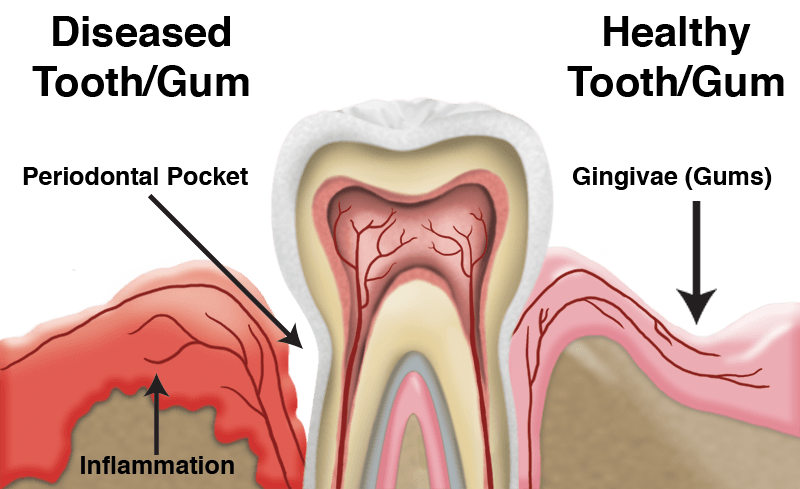Preventative Dentistry
Preventative dentistry emphasizes the importance of ongoing hygiene procedures and daily practices to prevent tooth decay and other dental diseases. It is the modern way of helping you keep a healthy mouth and means you need to have less dental treatment. Preventative dentistry is crucial in patients with mental health problems. The individual may neglect oral hygiene, dental appointments
PERIODONTIC CARE
If you have swollen, bleeding gums, you may have periodontal disease. The sooner we eliminate gum disease in your mouth, the better. Advanced gum disease is called periodontitis. Left untreated, periodontal disease can cause serious loss of teeth and bone, and it has recently been linked to heart disease and stroke as well as premature and low weight babies. Treating periodontal disease is one of the most important things you can do for yourself and your family. We take it seriously, and so should you.
Chronic periodontitis affects 47.2% of adults over 30 in the United States. It can lead to the loss of tissue and bone that support the teeth and it may become more severe over time. If it does, your teeth will feel loose and start moving around in your mouth. This is the most common form of periodontitis in adults but can occur at any age. It usually gets worse slowly, but there can be periods of rapid progression.
Aggressive periodontitis is a highly destructive form of periodontal disease that occurs in patients who are otherwise healthy. Common features include rapid loss of tissue and bone and may occur in some areas of the mouth, or in the entire mouth.

TOOTH SENSITIVITY
Is the taste of ice cream or a sip of hot coffee sometimes a painful experience for you? Does brushing or flossing make you wince occasionally? If so, you may have sensitive teeth.
Possible causes include tooth decay (cavities), fractured teeth, worn fillings, gum disease, worn tooth enamel, or an exposed tooth root.
In healthy teeth, a layer of enamel protects the crowns of your teeth—the part above the gum line. Under the gum line a layer called cementum protects the tooth root. Underneath both the enamel and the cementum is dentin. Dentin is less dense than enamel and cementum and contains microscopic tubules (small hollow tubes or canals). When dentin loses its protective covering of enamel or cementum these tubules allow heat and cold or acidic or sticky foods to reach the nerves and cells inside the tooth. Dentin may also be exposed when gums recede. The result can be hypersensitivity.
Sensitive teeth can be treated. The type of treatment will depend on what is causing the sensitivity.
SEALANTS
Brushing and flossing are the best ways to help prevent cavities, but it’s not always easy to clean every nook and cranny of your teeth – especially those back teeth you use to chew (called molars). Molars are rough, uneven and a favorite place for leftover food and cavity-causing bacteria to hide. Still, there’s another safety net to help keep those teeth clean. It’s called a sealant.
Sealants are thin plastic coatings that are painted on the tooth's surface to fill the grooves and pits. The coating is hardened to protect the tooth's surface from decay. The coating can be clear, white, or slightly tinted, but is virtually impossible to see because of its placement on the back molars. Sealants are a great option for the prevention of dental caries (cavities) because they act as a physical barrier to decay. The protection is determined by the sealant's ability to adhere to the tooth.

